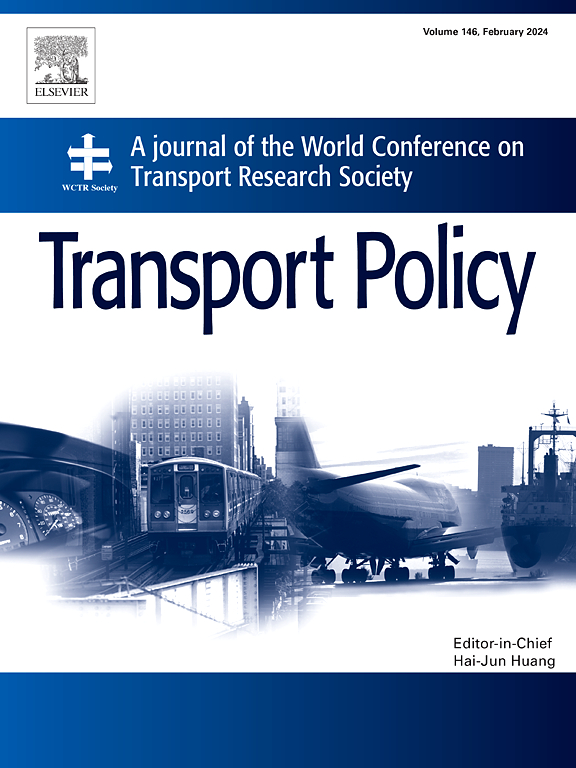导航可持续交通:德国交通部门碳排放的小波分析
IF 6.3
2区 工程技术
Q1 ECONOMICS
引用次数: 0
摘要
到2045年实现碳中和是德国的一个关键国家目标,目前占全国二氧化碳排放总量20%的交通运输部门仍然是脱碳最具挑战性的领域之一。本研究调查了生物燃料(BIOF)、能源生产力(ENGP)、基础设施发展(INFD)和可持续能源创新(SEIN)对德国交通部门二氧化碳排放(TCO2)的影响。利用2000年至2021年的季度数据,采用基于小波的分析来检查这些结构变量与多个时间范围内排放之间的动态关系。研究结果表明,BIOF、ENGP和SEIN与交通排放呈负相关,而INFD呈正相关。值得注意的是,BIOF和SEIN在中长期表现出更强的缓解效果,而ifd在短期和长期尺度上都会导致排放增加,这强调了将基础设施规划与气候目标保持一致的重要性。结果具有鲁棒性,并通过基于小波的OLS回归进一步验证。本文提供了基于高频交通数据的新颖经验证据,并提供了可操作的政策建议,以支持德国的气候行动法和欧盟层面的气候框架。这些见解对其他寻求以德国等发达经济体为蓝本设计可持续流动路径的国家也具有重要意义。本文章由计算机程序翻译,如有差异,请以英文原文为准。
Navigating sustainable mobility: Wavelet insights into carbon emissions in Germany's transportation sector
Achieving carbon neutrality by 2045 is a key national goal in Germany, where the transportation sector—currently responsible for 20 % of the nation's total CO2 emissions—remains one of the most challenging areas for decarbonization. This study investigates the influence of biofuels (BIOF), energy productivity (ENGP), infrastructure development (INFD), and sustainable energy innovation (SEIN) on transport-sector CO2 emissions (TCO2) in Germany. Using quarterly data from 2000 to 2021, a wavelet-based analysis is employed to examine the dynamic relationships between these structural variables and emissions across multiple time horizons. The findings reveal that BIOF, ENGP, and SEIN are negatively associated with transport emissions, while INFD is positively correlated. Notably, BIOF and SEIN exhibit stronger mitigation effects in the medium and long term, whereas INFD contributes to emission increases across both short- and long-term scales—underscoring the importance of aligning infrastructure planning with climate objectives. The outcomes are robust and further validated through wavelet-based OLS regression. This paper provides novel empirical evidence based on high-frequency transport data and offers actionable policy recommendations that support Germany's Climate Action Law and EU-level climate frameworks. The insights also hold relevance for other countries seeking to design sustainable mobility pathways modeled on advanced economies like Germany.
求助全文
通过发布文献求助,成功后即可免费获取论文全文。
去求助
来源期刊

Transport Policy
Multiple-
CiteScore
12.10
自引率
10.30%
发文量
282
期刊介绍:
Transport Policy is an international journal aimed at bridging the gap between theory and practice in transport. Its subject areas reflect the concerns of policymakers in government, industry, voluntary organisations and the public at large, providing independent, original and rigorous analysis to understand how policy decisions have been taken, monitor their effects, and suggest how they may be improved. The journal treats the transport sector comprehensively, and in the context of other sectors including energy, housing, industry and planning. All modes are covered: land, sea and air; road and rail; public and private; motorised and non-motorised; passenger and freight.
 求助内容:
求助内容: 应助结果提醒方式:
应助结果提醒方式:


